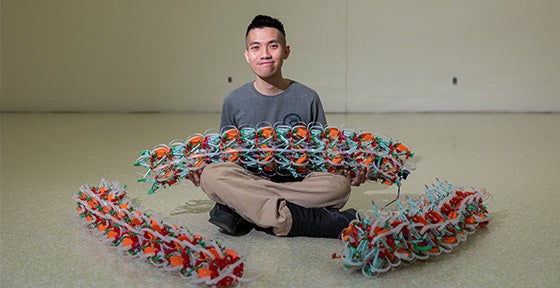From R2-D2 to Optimus Prime, Wall-E to The Iron Giant, robots have long captured our collective imaginations. In today’s world, their influence is far less limited to fictional settings; robotics are an essential driver behind next-generation products, medical innovations, educational advances and more.
Established in 2010 by the U.S. House of Representatives, National Robotics Week highlights this growing importance and emphasizes the field’s ability to inspire technology education. Researchers across Case Western Reserve University—including at the cutting-edge Human Fusions Institute—demonstrate this ability on a daily basis, leading projects with the potential to reshape how we conduct our lives.
With help from the Technology Transfer Office (TTO), CWRU teams have recently launched spinoffs including RoadPrintz, a pavement-marking system designed to better protect road workers, and Symphony Robotics, an MRI-guided, magnetically actuated robotic arm technology. Others have partnered outside the university with existing robotics companies, integrating ongoing campus research into new product development such as a robotic approach for incisionless prostate surgery and the use of AI-powered technology to assist people with Alzheimer’s or early-stage dementia.
Learn more about just a few of the many robotics projects taking shape at Case Western Reserve.
Powering social and physical interactions

In the Social and Physical Human-Robot Interaction (SaPHaRI) Lab at Case School of Engineering, Assistant Professor Alexis E. Block’s research team designs, builds, and programs robots for unique social and physical interactions with humans.
One such example involves the NAO robot, part of the team’s ongoing AstroPsycho project: a multimodal framework designed to provide dynamic mental health support in challenging environments where traditional support is limited or impossible.
By leveraging asynchronous therapist guidance and real-time physiological signals to administer on-demand support sessions, AstroPsych adapts continuously to the evolving needs of individuals in crisis.
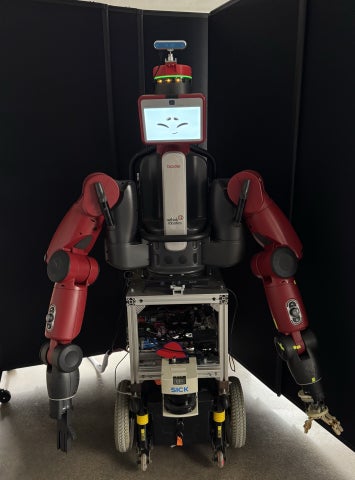
The SaPHaRI team is also at work on RoboSOAR (Robotic System for Optimized Adaptive inteRaction), a Baxter Robot (Rethink Robotics, 2011) they inherited that is mounted on a custom mobile base. Knowing how influential first impressions can be, the team is exploring how a robot that adapts its gestures and behaviors based on human feedback can shape people’s willingness to engage with it.
Learn more about the SaPHaRI team’s work including their ongoing Turtlebots project, an exploration of the interaction between humans and a group of mobile robots in a guided navigation context.
Extending human reach
In Assistant Professor Kathryn “Kati” Daltorio’s lab at Case School of Engineering, the team is working to create “soft robots”: creations that bridge a gap between the design and function of biological creatures and manufactured robots. Their goal? Enable humans to accomplish important tasks—wherever they may be.

In one such example, the Daltorio Lab is working to extend human reach underground. Funded by the U.S. Department of Energy, they’re drawing inspiration from worms to develop a peristaltic conduit that expands and contracts to burrow into the ground. The project—which also earned Daltorio a prestigious National Science Foundation CAREER Award—could pave the way for underground powerline installation nationwide, regardless of surrounding infrastructure limitations.
But worms aren’t the only creatures offering Daltorio inspiration. As co-director of the Biologically Inspired Robots Lab, Daltorio models crabs, applying their abilities to crawl, clutch, and climb to the robots her team creates. Possible applications include retrieving unexploded bombs from underwater, testing the integrity of offshore oil structures and the like—but they’re just getting started.
Supported by CWRU’s TTO and the Veale Institute for Entrepreneurship, Daltorio’s efforts recently led to the launch of CrabLine Robotics LLC, a startup Crain’s Cleveland Business recently featured. Watch a video made by the Veale Institute to see her lab’s crablike robots in action.
Leading in competition
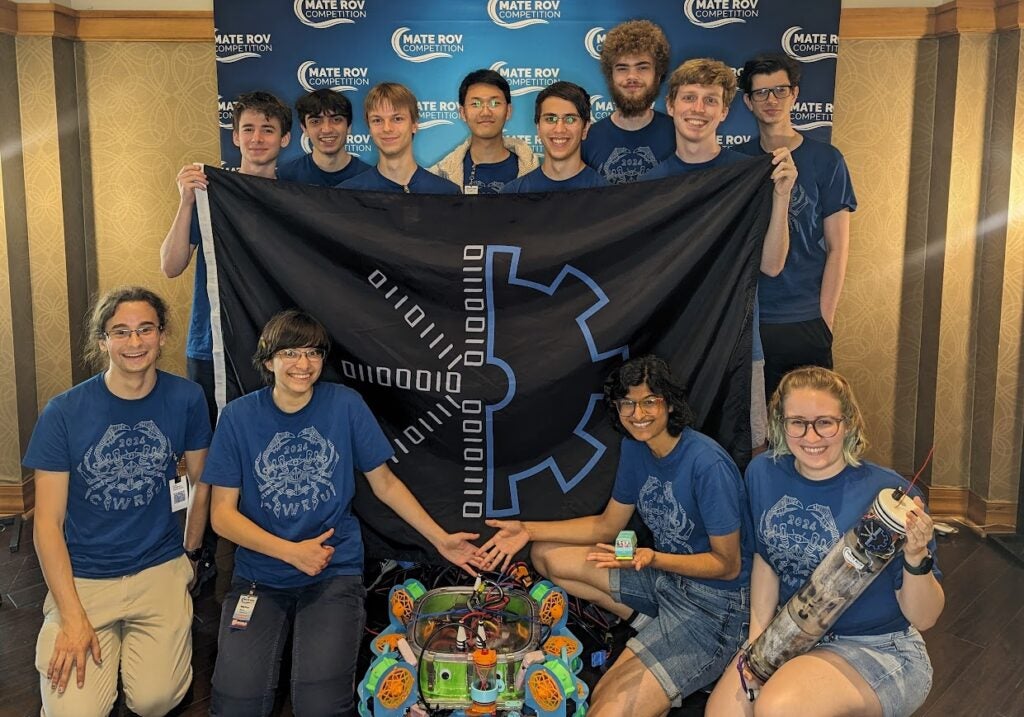
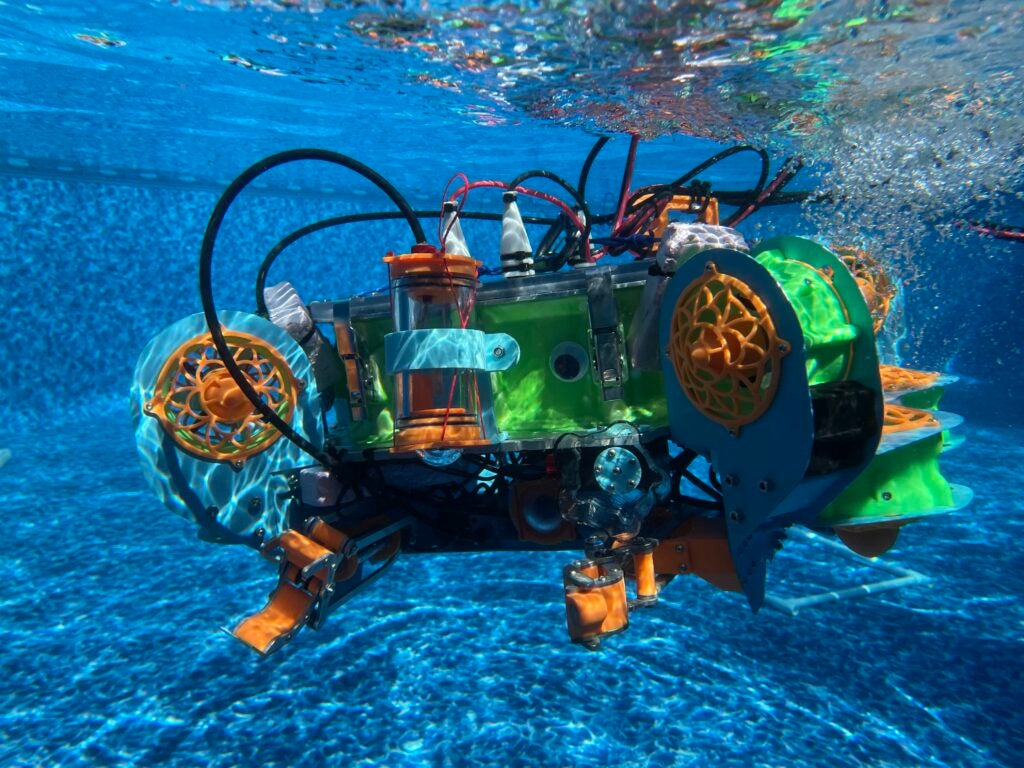
The members of CWRUbotix, the university’s student-run robotics club, are also hard at work driving robotics projects forward. They’re actively designing an underwater drone for the Marine Advanced Technology Education (MATE) Center’s remotely operated vehicle (ROV) competition in June, which they also competed in last year. Driven by a passion for oceanic preservation, the team designed their drone to grab various PVC pipe props to demonstrate functionality.
“We’re also adding several new modifications to our routine design for specific objectives,” explained Ben Kwiatkowski, PR and outreach manager for CWRUbotix. “These include a rotating stereo camera for depth perception, as well as a separate pair of rotating cameras that can create a photosphere like you see on street view in Google Maps.”
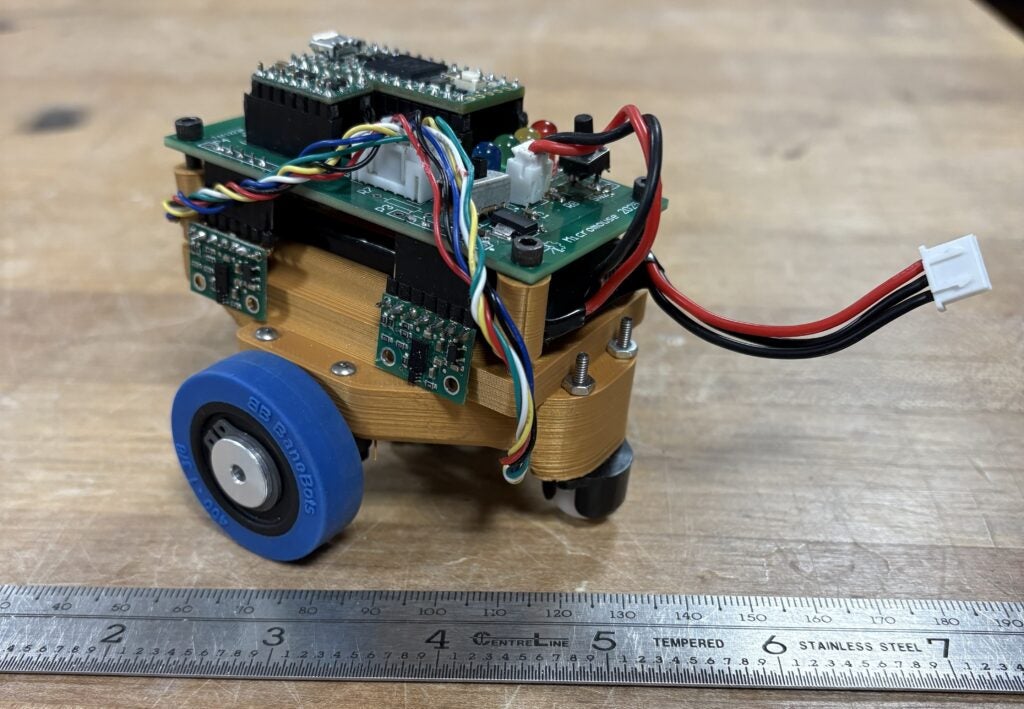
CWRUbotix members also recently completed a Micromouse robot designed to solve mazes autonomously and find the shortest path from entrance to exit using LiDAR sensors and a maze-solving algorithm. At half the size of last year’s iteration, the robot can sit comfortably in the palm of your hand.
Any Case Western Reserve University students interested in taking part in future projects can learn more at cwrubotix.org or join members at general body meetings. The next meeting will take place Saturday, April 12, in Glennan 408.


